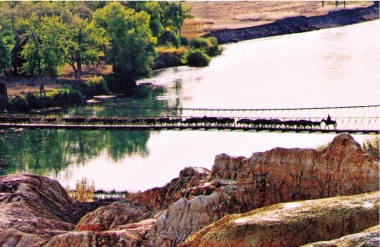Location: Gallery 456 |
On September 20, 2008, forty-five photographers from different countries reached Urumchi—the city that is the farthest from any ocean in the world. Led by Mr. Pang, the president of the Malaysian Camera Club, and Mr. Tsang, the chairman of Shenzhen Travel Service Co. Ltd, we took two midsize buses to tour northern Xinjiang.
In the oil city of Kramaye, we saw colorful lights at night; in the nearly deserted wilderness, we watched as shepherds, like their ancestors, searched for water and grass. To see a beautiful sunrise, we rode horses up a mountain. We admired both the Horhortoe Sea (which is a national park) and Gardunye’s recently built apartment houses in the purified district.
Although we were outsiders in Wormod, we were able to, through an interpreter, speak with the Toya minority and learn that their wooden houses don’t have any nails and that they will not step across their threshold during the extremely cold winter months. The nomadic lifestyle of the Kazakhs did not seem so harsh after we visited them in their Mongolian tents and were treated to folk dancing and honeydew in Uighur’s Vineyard.
On the thirteenth day of our trip, we went south to Turpan. Its flaming mountain was really hot, and its windmill looked like the ones in Holland. Nature carved the wonderful Yardun place, but ancient peoples dug and connected the Korez underground irrigation system through hundreds of miles of the droughty land.
Our buses were running very fast along the superhighway. Through the windows, we saw on a blue mountain four big white characters that the government had set up to announce the need for a huge water system project. At several pay stations, banners announced: “Develop wealthy economy. Create harmonious society.” Nothing can’t be done with the spirit that had produced the Beijing Olympics.
“We wear a leather coat in the morning and a satin cloth at noon, and then we eat watermelon by the fireplace in the evening. Our Xinjiang is better than South China,” the local people sing. We agree and we would like to revisit Xinjiang a few years later to see how the people and the wilderness would respond to a rapidly changing China.
This exhibition is made possible in part with public funds from the Manhattan Community Fund, supported by the New York City Department of Cultural Affairs and administered by Lower Manhattan Cultural Council.
Friday, October 15
6pm-8pm
| Coverage |

